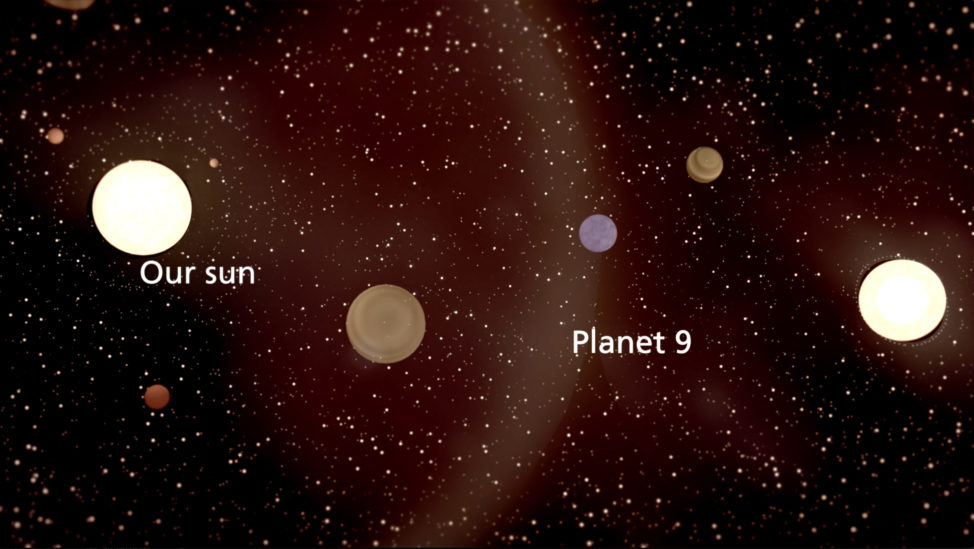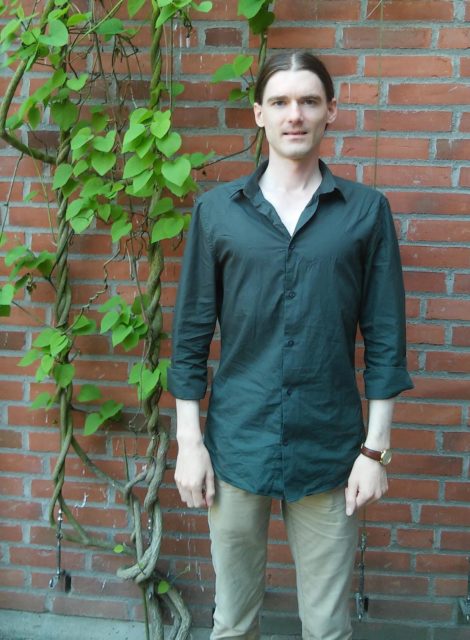Is it possible that the new-found theoretical Planet 9 is actually an exoplanet, a planet from another solar system?
According to astronomers at Sweden’s Lund University, it’s “highly likely” that Planet 9 was actually “snatched” from another solar system by our young sun some 4.5 billion years ago, or within 100 million years after its formation.
In January, astronomers Konstantin Batygin and Mike Brown from the California Institute of Technology – Caltech – got the science community buzzing when they revealed evidence of a big planet wildly and broadly circling the Sun in the outskirts of the solar system.
Findings related to its discovery are based on factors such as the gravitational behavior of a group of objects that are mostly orbiting beyond the Kuiper belt.
While Batygin and Brown have been searching the skies to directly image Planet 9, so far it hasn’t been seen.
The Swedish researchers have conducted a new computer model based study that has been published in the Monthly Notices of the Royal Astronomical Society Letters.
Scientists have long thought that stars are formed in tight clusters.
Since they tend to be close to each other while in their cluster, the astronomers figured this is a perfect opportunity for one star to ‘steal’ a planet or planets from another as they brush by each other.
This led them to realize that Planet 9 was probably taken by our sun as it passed close to another star inside its cluster.
So if Planet 9 was stolen from another star system does its system still exist?
“Probably yes,” says Alexander Mustill, an astronomer at Lund University and the study’s lead author.
“The system would have about the same age as our own, since it would have formed in the same star cluster, so the star would still be burning its nuclear fuel like the Sun, said Mustill in an email to VOA’s Science World.
“There is a chance though that the original star was more massive than the Sun. If that were the case, it wouldn’t live as long, and it could now be a “dead” white dwarf,” he said.
Mustill said that the name and location of Planet 9’s original home solar system, unfortunately, is pretty much impossible to determine, since our Sun and the other star have been traveling through the Milky Way for many billions of years. He says that star orbits cannot be traced back so long ago.
Other scientists are studying the skies to look for so called “solar siblings” of stars that might have formed in the same cluster as the Sun.

This artistic rendering shows the distant view from Planet Nine back towards the sun. (Caltech/R. Hurt (IPAC))
According to Mustill, in order to determine whether or not a star was born in the same star cluster as the Sun, scientists need to find similarities in the abundances of trace elements in the Sun and in other stars.
While getting an exact identification is impossible, Mustill says that some scientists contend that star cluster M67 may have been the original home of the Sun. If so, it could have also been the original home of Planet 9 and its host star.
Since it’s also possible Planet 9’s original star may have already died, Mustill says that perhaps some of the events that led to our Sun’s capture of the planet may have impacted the system’s remaining planets.
“Stealing another planet from its star is easier if the planet is already quite far away from its star, in our model a few hundred times the distance between the Earth and the Sun,” said Mustill.
So how did Planet 9 develop the wide orbit around our sun theorized by Batygin, Brown and others?
“In our paper we argue that this could have happened as a result of ‘planet – planet scattering’, where planets in a system kick each other around due to their gravitational forces,” explained Mustill.
He says that because of this, it’s possible the star system’s other planets – Planet 9’s siblings – may have been either kicked into interstellar space, smashed into each other or into their star.
“So Planet 9’s original system could well have ended up more chaotic and less ordered than our own,” said Mustill.
Lund University interview with Alexander Mustill























Comments are closed.